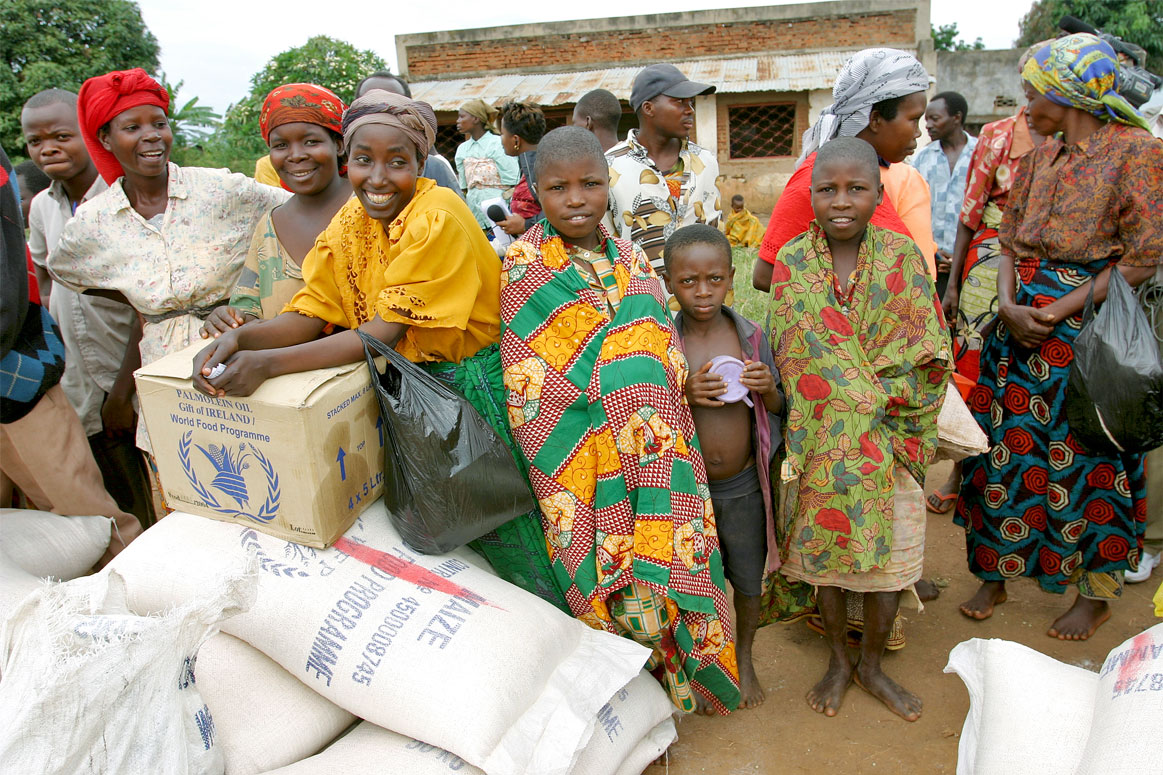advertisement
Catholic Relief Services leverages machine learning to fight hunger
Catholic Relief Services (CRS) has a mission to provide humanitarian relief to people in the developing world. Since 2016, it…

Catholic Relief Services (CRS) has a mission to provide humanitarian relief to people in the developing world. Since 2016, it has been using data collection and machine learning to help guide those efforts.
CRS, established by the U.S. Conference of Catholic Bishops in 1943 to aid World War II refugees in Europe, is an international humanitarian agency in the U.S. and a member of the Caritas International network of Catholic humanitarian agencies.
CRS began developing the Measurement Indicators for Resilience Analysis (MIRA), a protocol for monitoring and evaluating the resilience of disaster-stricken communities, in Malawi. Malawi, a land-locked country in southeastern Africa, is particularly vulnerable to weather-related shocks. Eighty-four percent of its population lives in rural areas and relies on subsistence agriculture.
advertisement
“MIRA is used to predict hunger and study household recovery trajectories in Malawi. The increased severity of natural disasters exacerbates food insecurity,” says James Campbell, regional technical director for monitoring, evaluation, accountability, and learning at CRS.
Severe flooding displaced hundreds of thousands of people in southern Malawi in 2015. The flooding was followed by a severe drought, which in turn led to crop destruction by a crop pest called fall armyworm.
Planning and targeting the appropriate response in the face of such disasters requires understanding which households are at risk of food shortages. To that end, Campbell and his team developed MIRA, a high-frequency data collection protocol that gathers information about “shocks” and then uses two machine learning algorithms — k-nearest neighbors (KNN) and the least absolute shrinkage and selection operator (LASSO) — to predict which households would be at risk of food shortages one to two months before they occurred.
advertisement
“This early warning information is now regularly shared with local village development committees to help them plan and target responses,” Campbell says.
The project has earned CRS a FutureEdge 50 Award for applications of emerging technologies.
Predicting resilience
CRS’s MIRA protocol uses “embedded enumerators,” people who live in the selected communities, to collect data using mobile survey and case management software. They collect data about demographics, livelihood, economics, and shock history. That survey is administered annually or biannually. The enumerators also administer a high-frequency follow-up survey monthly to the same households, tracking continued and new shocks.
advertisement
Surveyed households were selected based on their location on flood exposure maps based on data from the Dartmouth Flood Observatory. Once surveyed, the results are organized according to flood risk groups and three resilience variables:
- Well-being outcomes: This variable measures welfare via a coping strategies index and hunger score. A lower welfare value implies lower vulnerability to shocks.
- Shocks experienced: Enumerators follow up with households monthly to allow them to report new and continued shocks to measure persistence, with drought being the most frequent.
- Capacities and characteristics: MIRA also includes characteristics that can affect the probability of recovering from shocks, such as land assets, livestock, flood plain location, secondary houses, age, gender, education, and disability.
CRS began working on the project in 2013, though Campbell says it took more than two years to settle on the methodology and identify a project on which to implement MIRA and test the approach. The work was based on resilience metrics developed by researchers at the Charles H. Dyson School of Applied Economics and Management at Cornell University. An alliance of NGOs for the establishment of resilience metrics, including CRS, contributed to that work. Cornell and several other universities went on to form a Resilience Measurement Technical Working Group under the auspices of the U.N. Food and Agriculture Organization and the World Food Program.
“The working group generated a series of technical papers outlining a framework, an analytical model, and other design principles for resilience measurement. Our MIRA protocol was largely influenced by the work developed by this group and the Food Security Information Network,” Campbell says.
Humanitarian AI
CRS says it measures the MIRA protocol’s success through its adoption rate. In addition to the Malawian government, other NGOs and USAID have expressed interest in CRS’s approach, and CRS is looking for communities to take ownership of the module and use the data to inform their own mitigation strategies.
MIRA was developed in Malawi as part of the United in Building and Advancing Life Expectations (UBALE) Project, but has since won the Microsoft AI for Humanitarian Action Grant, under which Microsoft will help CRS develop a plug-and-play solution for any project that wishes to implement the MIRA protocol.
CRS says that will allow any country program to identify household characteristics driving food insecurity and predict future shock outcomes using a comprehensive set of machine learning algorithms. That capability will give CRS the ability to pre-position food aid in areas that are about to experience food insecurity, getting aid to the people who need it faster and more efficiently.
“Artificial intelligence will massively impact many sectors, including international development and humanitarian assistance. An important role of technology leaders is to strike the right balance between opportunity and risk. We must bring the best digital capabilities to our programs while carefully addressing risks around data privacy and ethics of AI,” says Steven Hellen, director of information and communication technology for development at CRS.